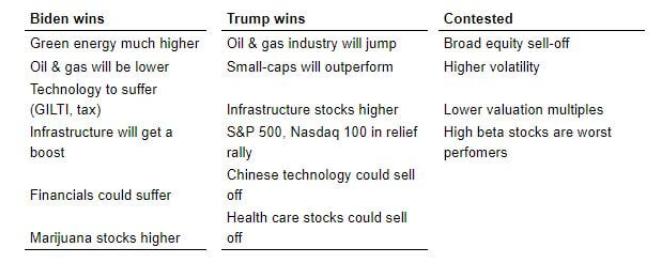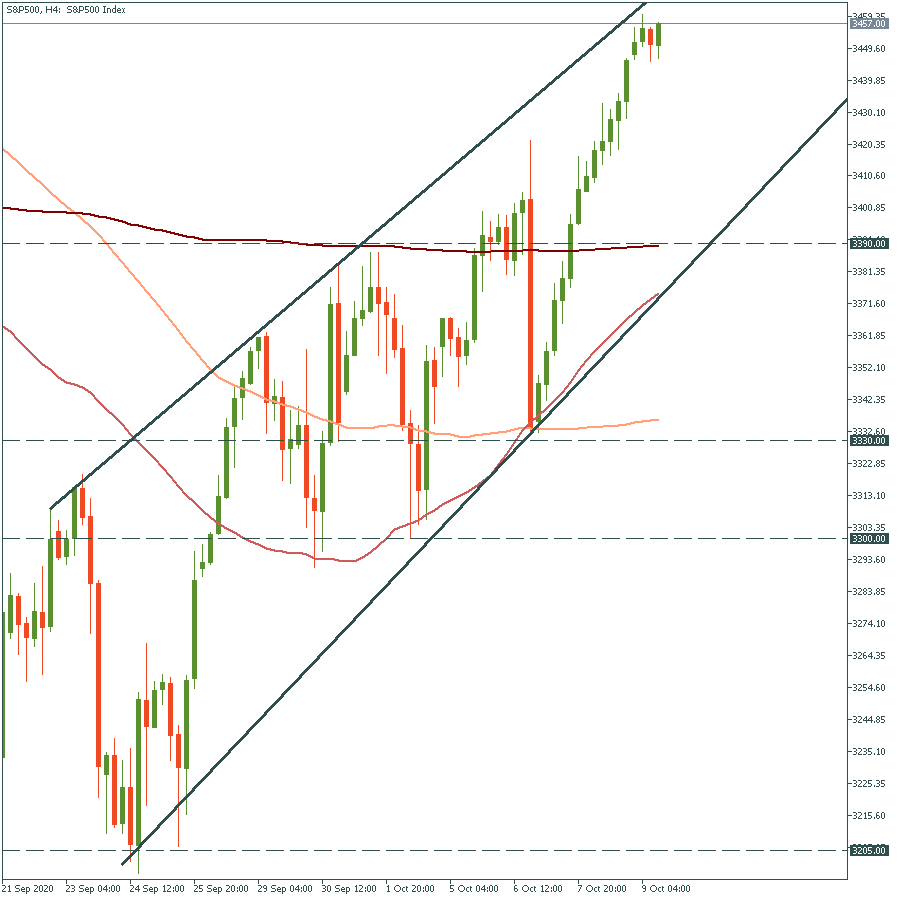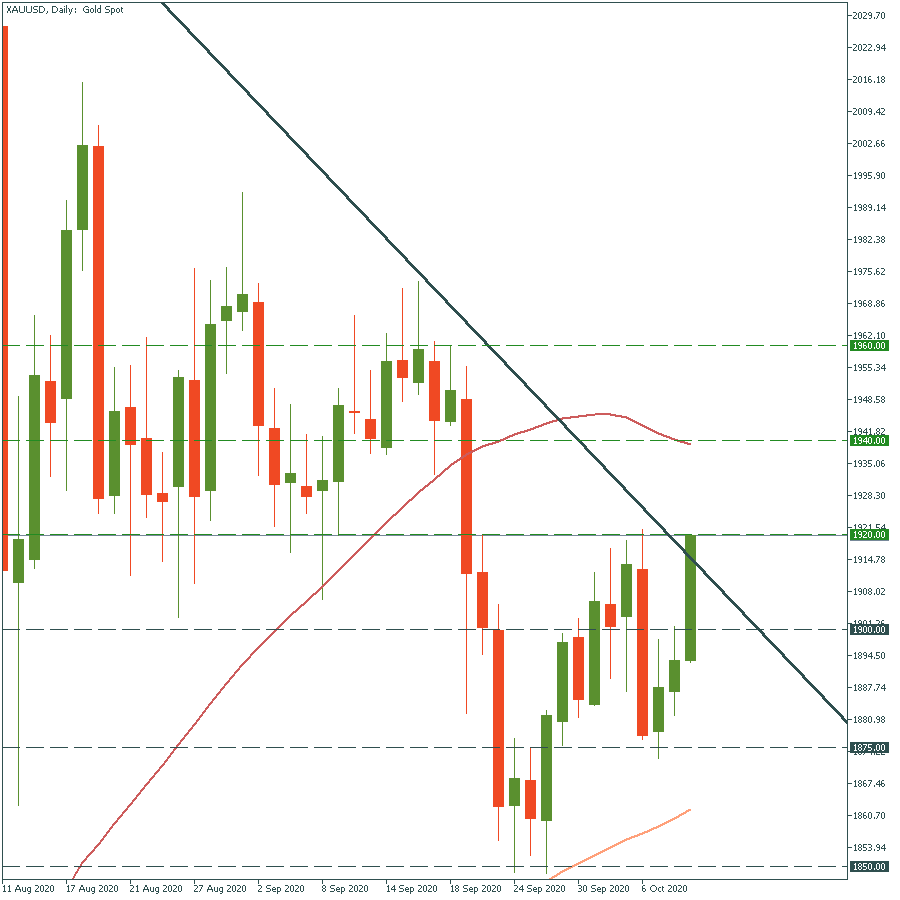
The G20 summit took place in Bali, Indonesia, on November 2022…

Don’t waste your time – keep track of how NFP affects the US dollar!
Data Collection Notice
We maintain a record of your data to run this website. By clicking the button, you agree to our Privacy Policy.

Beginner Forex Book
Your ultimate guide through the world of trading.
Check Your Inbox!
In our email, you will find the Forex 101 book. Just tap the button to get it!
Risk warning: ᏟᖴᎠs are complex instruments and come with a high risk of losing money rapidly due to leverage.
71.43% of retail investor accounts lose money when trading ᏟᖴᎠs with this provider.
You should consider whether you understand how ᏟᖴᎠs work and whether you can afford to take the high risk of losing your money.
Information is not investment advice
Saxo Bank claimed that contested election may create the strongest political risk in over a decade, and as a result, lead to the stock’s sell-off. Indeed, the market is under huge pressure now amid the coronavirus pandemic and all related problems. A possible shift in the policy of the world’s largest economy will shake the whole market.
Saxo Bank foresees three scenarios: a contested election, a clean sweep by Biden, and a win by Trump. No doubt that the market volatility will increase around November’s election. It’s important to get ready. In general, the US economic direction won’t change enormously as any chosen president will take nearly the same actions after the inauguration. Both of them will inject extra money to support economic growth and force the Fed for further easing of financial conditions. However, some differences may still take place, which will influence the market in various ways.
Looking back on Trump’s governance, the stock market has performed quite well. The corporate sector has been even boosted by Trump’s policies of lower tax pays and softer government control. Speaking about Biden’s victory, on the one hand, investors may be encouraged by the large-scale stimulus package, and as a result, stocks may rise.
On the flip side, Biden’s new policy may introduce higher taxes. Saxo Bank counted that if Biden increases tax rates by the amount he has already proposed, S&P 500 will fall by 9%. However, it is still a chance that Biden won’t make any tax changes due to the current economic downfall.
Enormous supportive government measures helped stocks to surge above pre-pandemic levels. That’s why investors now feel confident that the economic activity will rebound from the coronavirus slump with fewer losses than after the 2008 financial crisis.
As for commodities, Saxo Banks has bullish prospects on precious metals, and especially gold. The main reasons are the weakening US dollar and the inflation hedge. “Following a year where gold is up more than 20% and silver double that, it is a bold call to look for further gains”. They forecast that gold will reach $2 000 by the year-end.
The outlook for the oil market isn’t so bright. According to Saxo Bank, oil prices will fluctuate in the $38-$48 corridor and should escape it only during the first half of the next year.
Remember that it actually doesn’t matter for a trader where prices will go: up or down, as you can open both buy and sell trades. Catch the market movement and join the flow!

Let’s look what’s happening now on the charts. S&P 500 has skyrocketed to highs, unseen almost a month. The move above the high of September 4 at 3 480 will drive the stock index to the record high of 3 580. On the flip side, if it falls below the 200-period moving average of 3 390, it will drop to the 100-period moving average of 3 330.

XAU/USD is trying to break through the month trendline. If it manages to do so, it will rise to the 50-day moving average of $1 940 and then to the high of September 16 of $1 960. The move below the key psychological mark of $1 900 will push gold to the next support of $1 875.


The G20 summit took place in Bali, Indonesia, on November 2022…

The deafening news shocked the whole world yesterday: the British Queen Elizabeth II died peacefully at the age of 96…

After months of pressure from the White House, Saudi Arabia relented and agreed with other OPEC+ members to increase production.

eurusd-is-falling-what-to-expect-from-the-future-price-movement

Greetings, fellow forex traders! Exciting news for those with an eye on the Australian market - the upcoming interest rate decision could be good news for Aussies looking to refinance or take out new loans. The Mortgage and Finance Association Australia CEO, Anja Pannek, has...

Hold onto your hats, folks! The Japanese yen took a nosedive after the Bank of Japan (BOJ) left its ultra-loose policy settings unchanged, including its closely watched yield curve control (YCC) policy. But wait, there's more! The BOJ also removed its forward guidance, which had previously pledged to keep interest rates at current or lower levels. So, what's the scoop? Market expectations had been subdued going into the meeting, but some were still hoping for tweaks to the forward guidance to prepare for an eventual exit from the bank's massive stimulus
Your request is accepted.
We will call you at the time interval that you chose
Next callback request for this phone number will be available in 00:30:00
If you have an urgent issue please contact us via
Live chat
Internal error. Please try again later